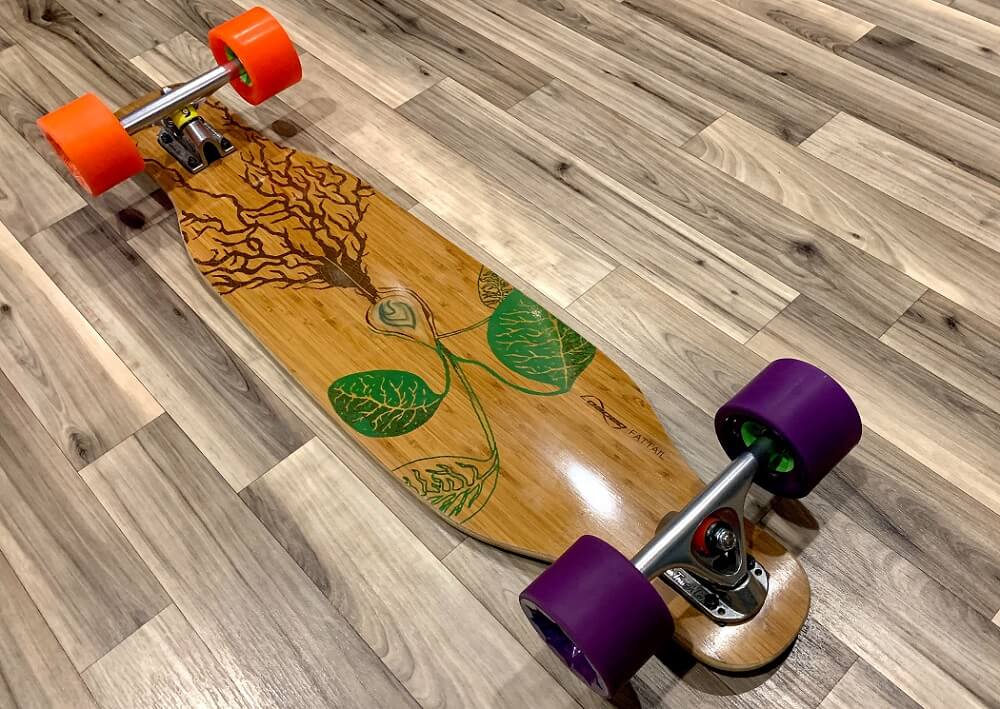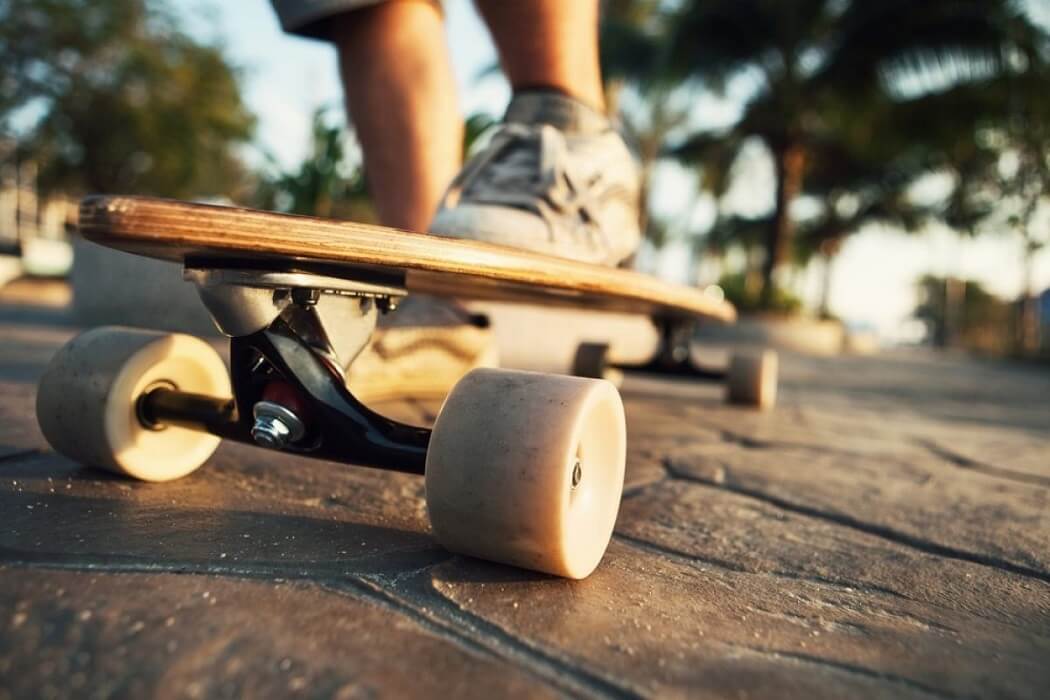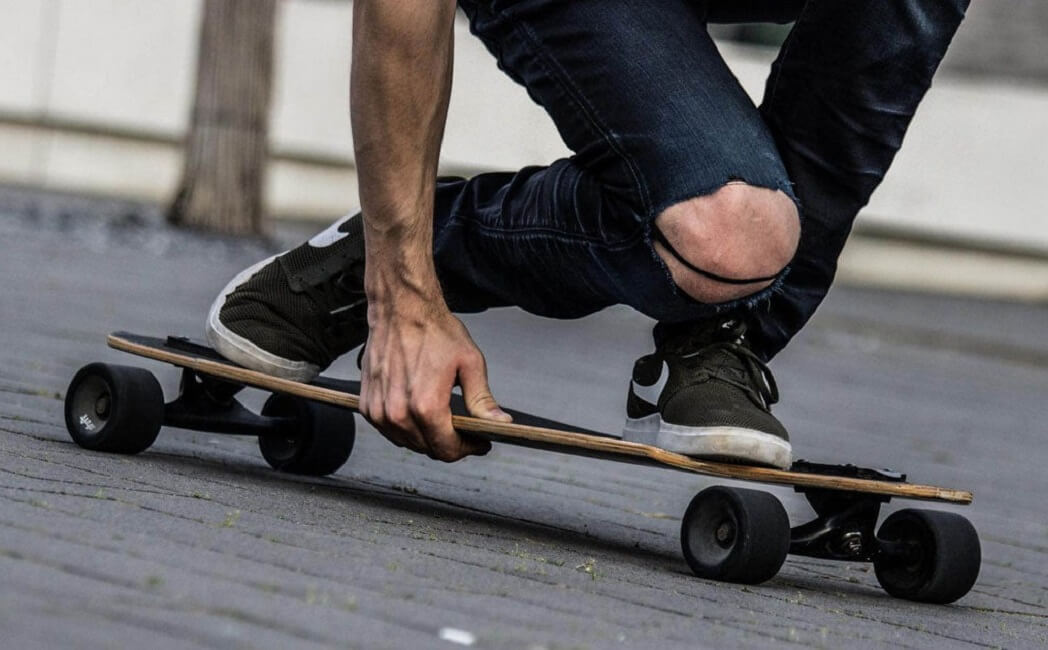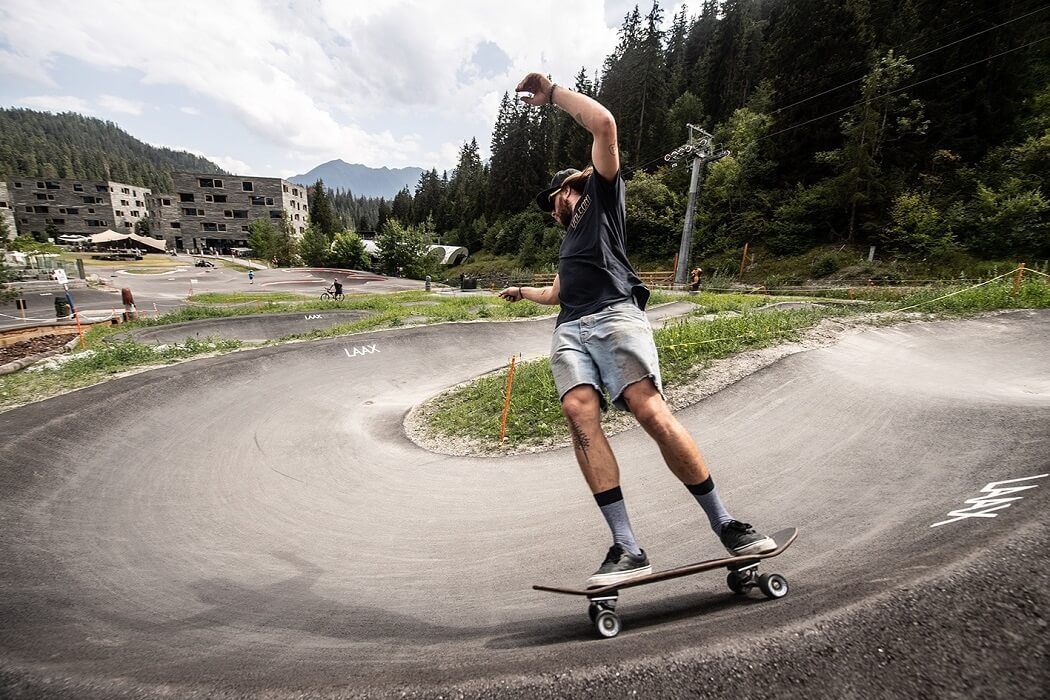In the exhilarating world of longboarding, there exists a skill that separates the masters from the novices – the art of pumping. Picture yourself effortlessly gliding down a sun-kissed boulevard, feeling the wind in your hair as you carve through the streets, effortlessly building speed without pushing. This is the magic of longboard pumping, a technique that combines finesse, balance, and board setup to create a seamless dance with the pavement. As an avid longboarder with years of experience in this niche, I’ve journeyed through the highs and lows of mastering the pump. In this guide, I’ll share the secrets of how to pump effectively and guide you through building the ultimate pump board. So, grab your helmet, lace up your riding shoes, and let’s dive into the world of longboard pumping.
Building the Ultimate Pump Board
- Deck Selection: The foundation of any great pump board lies in the deck. Look for a deck with a slight flex that’s responsive to your movements. Drop-through and drop-deck designs are popular choices for pump boards as they offer a lower center of gravity and improved stability.
- Truck Tuning: Tighten your trucks for stability during pumps but keep them loose enough to allow for quick, fluid movements. Experiment with various bushing durometers to find the perfect balance between stability and agility.
- Wheel Choice: Opt for larger, softer wheels with a square-edged lip for maximum grip and smooth rides. The right wheels can make a significant difference in your pumping experience, especially when you encounter rough patches of pavement.
- Bearings: Invest in high-quality bearings with low friction. Clean and lubricate them regularly to maintain optimal performance and reduce resistance when pumping.
- Foot Placement: Achieving a proper stance is crucial. Place your front foot at an angle across the deck with your toes pointing towards the nose and your back foot near the tail, perpendicular to the board. This stance will give you the control and leverage needed for efficient pumps.

How to Pump
- Weight Shifting: The essence of pumping lies in shifting your weight rhythmically from your front foot to your back foot. As you press down on your front foot, you’ll generate energy that propels you forward. Transfer your weight to the back foot to complete the cycle. Practice this motion to find your rhythm and build speed.
- Carving: While weight shifting is essential, carving plays a crucial role in maintaining momentum. Use gentle turns to guide your board, making the most out of each pump. The key is to keep your movements fluid and controlled.
- Practice, Practice, Practice: Becoming a proficient pumper takes time and patience. Start on flat terrain, then progress to gentle slopes. Over time, you’ll develop the muscle memory and balance required for more challenging terrains.
Learning to Pump Your Longboard
Learning to pump your longboard offers a range of benefits that can enhance your overall longboarding experience and skill set. Here are some compelling reasons why you should consider mastering this technique:
- Efficiency and Speed: Pumping allows you to build and maintain speed without constantly pushing off the ground. This means you can cover longer distances with less effort, making commuting or long-distance rides more efficient.
- Fluidity and Style: Pumping adds a fluid and stylish element to your longboarding. It’s like dancing on your board as you carve through the streets, giving you a unique and visually appealing riding style.
- Versatility: Pumping isn’t limited to flat terrain. You can use it on various types of terrain, including gentle slopes, pump tracks, and even downhill sections. This versatility makes you a more adaptable and skilled longboarder.
- Low Impact: Compared to pushing, pumping is a lower-impact way to ride. It puts less stress on your legs and joints, making it a suitable choice for riders of all ages and fitness levels.
- Connection with Your Board: Pumping requires a deep connection with your longboard. As you master this technique, you’ll become more attuned to the subtle movements and feedback of your board, which can improve your overall riding skills and confidence.
- Challenging and Fun: Learning to pump can be a rewarding challenge. It keeps longboarding exciting and provides a sense of accomplishment as you progress and refine your pumping skills.
- Community and Events: Pumping has gained popularity in the longboarding community, leading to the emergence of pump-specific events and competitions. Learning this skill can open up opportunities to connect with fellow riders and participate in fun and competitive events.
- Environmental Benefits: Pumping reduces the need for pushing or using an electric skateboard, making it a more eco-friendly way to get around.
- Health Benefits: While pumping is a low-impact activity, it still provides an excellent workout for your core, legs, and balance. It helps improve your coordination and can contribute to better overall physical fitness.
- Zen-Like Experience: Many riders describe pumping as a meditative or Zen-like experience. The rhythmic motion of weight shifting and carving can be calming and help you escape the stresses of daily life.

| Benefit | Description |
|---|---|
| Efficiency and Speed | Allows you to build and maintain speed with less effort. |
| Fluidity and Style | Adds a stylish and fluid element to your riding. |
| Versatility | Can be used on various terrains, including slopes. |
| Low Impact | Reduces stress on legs and joints, suitable for all ages. |
| Connection with Your Board | Deepens your connection with the board, improving skills. |
| Challenging and Fun | Offers a rewarding challenge and keeps riding exciting. |
| Community and Events | Opens opportunities to connect with riders and compete. |
| Environmental Benefits | Reduces the need for pushing or electric skateboards. |
| Health Benefits | Provides a workout for the core, legs, and balance. |
| Zen-Like Experience | Offers a meditative, calming experience. |
Learning to pump your longboard offers a diverse range of advantages that cater to both practical and personal aspects of your longboarding journey.
In summary, learning to pump your longboard not only adds an exciting dimension to your riding but also offers practical benefits such as efficiency, versatility, and improved fitness. Whether you’re a beginner or an experienced rider, mastering pumping can elevate your longboarding skills and provide a deeper connection with your board and the road beneath you.
Is Longboard Pumping Easy?
Longboard pumping is a skill that varies in difficulty depending on your prior experience with longboarding, your physical fitness, and your dedication to practice. For some riders, it may come relatively easily, while others may find it more challenging. Here are some factors to consider:
- Prior Longboarding Experience: If you already have experience with longboarding, including balance, control, and carving skills, you may find it easier to pick up pumping. Familiarity with your board and riding in general can be an advantage.
- Fitness Level: Pumping requires shifting your weight and using your leg muscles to generate momentum. If you have good leg strength and balance, you may adapt to pumping more quickly. However, even if you’re not in peak physical condition, you can still learn and improve over time.
- Practice: Like any skill, longboard pumping requires practice and dedication. The more you practice, the more comfortable and proficient you’ll become. Expect a learning curve, especially when you’re just starting.
- Terrain: The terrain you ride on can also affect the ease of pumping. Flat, smooth pavement is ideal for beginners, while hills and uneven surfaces may present more challenges.
- Board Setup: Having the right longboard setup for pumping, including the right deck, trucks, wheels, and bearings, can make the learning process smoother. An optimized board can help compensate for any initial difficulties.
- Mindset: Your mindset and determination play a significant role in how quickly you progress. Stay patient, positive, and open to learning from both successes and failures.

In conclusion, while longboard pumping may not be the easiest skill to master, it is attainable for most riders with practice and dedication. Expect some initial challenges, but don’t be discouraged. With time and effort, you can become proficient at pumping and enjoy the unique and rewarding experience it offers. It’s a skill that can enhance your longboarding repertoire and add an exciting dimension to your rides.
How to Make Your Longboard Pumpable
To make your longboard more pumpable and optimize it for this specific riding technique, you’ll need to focus on certain aspects of your longboard setup. Here are steps to make your longboard pumpable:
- Choose the Right Deck:
- Opt for a deck with flex: A slightly flexible deck allows for better energy transfer during each pump. Look for decks made from materials like bamboo or fiberglass, as they tend to offer good flex.
- Tune Your Trucks:
- Adjust your trucks: Tighten your trucks enough to provide stability but leave them loose enough to allow for responsive turning. You’ll need a good balance to carve effectively during pumping.
- Experiment with bushings: Different durometers (hardness) of bushings can affect how your trucks respond to your weight shifts. Softer bushings provide more turn, while harder ones offer stability. Experiment to find the right combination for your riding style.
- Select the Right Wheels:
- Choose large, soft wheels: Larger wheels roll over cracks and imperfections in the road more smoothly, providing a consistent ride. Softer wheels offer better grip and shock absorption, which is essential for pumping on various terrains.
- Opt for square-edged lips: Wheels with square edges grip the road better, allowing for sharper and more controlled turns during pumping.
- Bearings Maintenance:
- Invest in quality bearings: High-quality bearings with low friction are essential for reducing resistance and allowing your wheels to spin freely.
- Keep them clean and lubricated: Regularly clean and lubricate your bearings to maintain their performance.
- Foot Placement:
- Practice the right stance: Develop a proper foot stance by placing your front foot at an angle across the deck, with your toes pointing toward the nose. Your back foot should be positioned near the tail, perpendicular to the board. This stance provides optimal control and leverage for pumping.
- Learn Pumping Technique:
- Focus on weight shifting: The essence of pumping lies in shifting your weight from your front foot to your back foot, creating a continuous pumping motion.
- Master carving: Use gentle turns or carves to guide your board during each pump. The combination of weight shifting and carving is what generates and maintains momentum.
- Practice Regularly:
- Like any skill, practice is key to becoming proficient at pumping. Start on flat terrain and gradually move on to gentle slopes as you gain confidence and control.
- Consistent practice will help you develop the muscle memory needed to pump effectively and efficiently.
- Rider Fitness:
- Work on your core strength and balance: A strong core and good balance are essential for maintaining control while pumping.
- Patience and Persistence:
- Understand that mastering pumping takes time and patience. Don’t get discouraged by initial challenges; keep practicing and refining your technique.

By focusing on these steps and continually fine-tuning your longboard setup and technique, you can make your longboard more pumpable and enjoy the benefits of this exciting and efficient riding style.
Conclusion
After countless hours of trial and error, I can attest to the sheer joy of mastering the art of longboard pumping. The sensation of effortlessly gliding down the pavement, harnessing the energy of each pump, is unmatched. Building the ultimate pump board is not just about assembling the right components; it’s about forging a connection between rider and board. It’s about discovering the perfect rhythm, where board and body become one, and the streets transform into your canvas. So, as you embark on your journey to become a pumping maestro, remember that patience and persistence are your greatest allies. With practice, the right board setup, and a passion for the ride, you’ll soon find yourself cruising with the grace and speed that only a true longboard pumper can achieve.
How to Pump Video Review
FAQ
Q: What is longboard pumping?
A: Longboard pumping is a riding technique that involves generating and maintaining momentum on a longboard without the need for constant pushing. It’s achieved by shifting your body weight rhythmically to create a pumping motion, often accompanied by carving turns.
Q: Is longboard pumping suitable for beginners?
A: Longboard pumping can be challenging for beginners, but it’s not impossible to learn. It’s beneficial to have some basic longboarding skills, like balance and carving, before attempting pumping. Start with flat terrain and gradually progress to more complex scenarios.
Q: How do I choose the right longboard for pumping?
A: Look for a longboard with a flexible deck, trucks that can be adjusted for stability and responsiveness, large and soft wheels with square-edged lips, and quality bearings. The right deck shape and size also depend on your riding style and preferences.
Q: Can I pump on any type of terrain?
A: While flat, smooth pavement is ideal for learning, you can pump on various terrains, including gentle slopes and pump tracks. Keep in mind that rough or steep terrain may require more advanced pumping skills.
Q: What's the difference between pumping and pushing on a longboard?
A: Pushing involves using your foot to propel the longboard forward while pumping generates momentum through weight shifting and carving turns without the need for pushing. Pumping is more efficient and allows for continuous speed maintenance.
Q: How long does it take to become proficient at longboard pumping?
A: The time it takes to become proficient at longboard pumping varies from person to person. It depends on factors such as your prior experience, the amount of practice you put in, and your fitness level. Expect a learning curve and be patient with your progress.
Q: Are there any safety tips for longboard pumping?
A: Safety is crucial. Always wear protective gear, including a helmet, knee and elbow pads, and gloves. Start on less busy or car-free paths for practice. Be mindful of your surroundings and other road users. Learning to stop and control your speed is essential for safety.
Q: Can I use any type of longboard for pumping, or do I need a specific setup?
A: While you can attempt pumping on various longboards, having a setup optimized for pumping, including the right deck flex, trucks, wheels, and bearings, can significantly enhance your experience and make learning easier.
Q: What are some advanced pumping techniques to explore once I've mastered the basics?
A: Advanced pumping techniques include mastering more aggressive carving, pumping on steeper slopes, and incorporating tricks like manuals and slides into your pumping runs. These techniques can take your pumping skills to the next level.
Q: Can I use longboard pumping for transportation, or is it more for recreational riding?
A: Longboard pumping can be used for transportation on flat or slightly sloped routes, making it an efficient and eco-friendly way to get around. However, it’s also a popular recreational riding style due to its fluid and stylish nature.





